Widden Stud, in the Upper Hunter Valley of NSW, a sublime valley where the horse has reigned supreme through seven generations of thoroughbred breeders.
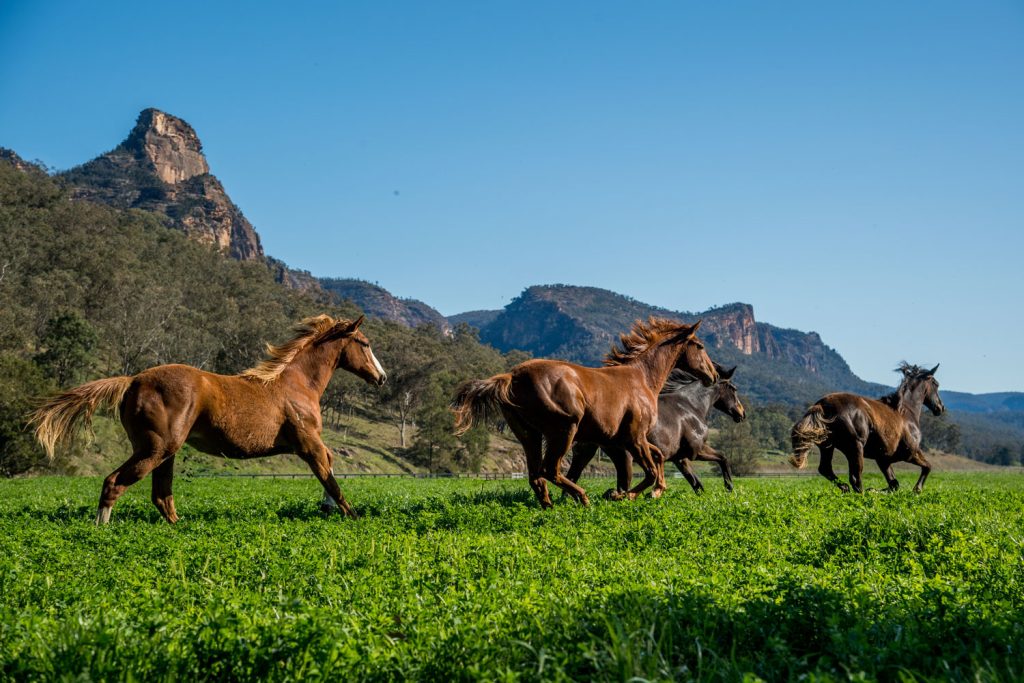
History of the Valley
As you traverse the winding roads through the Upper Hunter Valley, lined by gum trees and vast cliff faces, the remoteness of the surrounding countryside takes you back to a time before the major towns and cities we know today. Your mind wanders to the early pioneers of those valleys and the vastness of the country before them. A three-day ride on horseback to the nearest doctor. Crippling droughts and flooding rains. The Thompson family found their way to the Widden Valley in the 1850s, purchasing land to breed cattle, saddle horses and eventually breed some of the greatest racing bloodstock in Australian history. Seven generations of Thompsons have tended to Widden Stud, thought to be one of the oldest family-owned commercial horse studs in the world. They were honoured in the inaugural inductions into the racing hall of fame in 2001. But this is not a story of purely success, this is the story of endurance, tragedy and sheer determination that sees one farm through seven generations of guardianship.
John Thompson boarded the vessel, Lavinia, along with 130 other emigrants bound for the colonies. As an assisted emigrant, he was paid a £20 bonus for the emigration of his family. John and his family arrived in Port Jackson on the 6th December 1832. John had dreams of being a wool king but with dingos being an issue in the area, his merino enterprise was short lived. His sons soon turned to breeding short-horn cattle and saddle horses as their sole source of income. It was William Barber Thompson who pioneered the Widden Valley, purchasing a 244ha parcel of land, bearing the varied typography to suit livestock production in the unpredictable seasons presented by the Upper Hunter Valley. The land was blessed with alluvial creek flats and rising hill country, protected by sandstone cliffs. 11 years later in 1867, a further 445ha parcel of land, know as ‘the big flat’, was added. It was here that William built the first homestead of slab timber. The Santa Gertrudis cattle that stand on the 10,000 acre property today hail from the same blood line that travelled with William to the Widden Valley, but it was not cattle that would bring fame to the family run farm. It would be the young racehorses it would produce and the stallions it would stand over the subsequent 156 years.
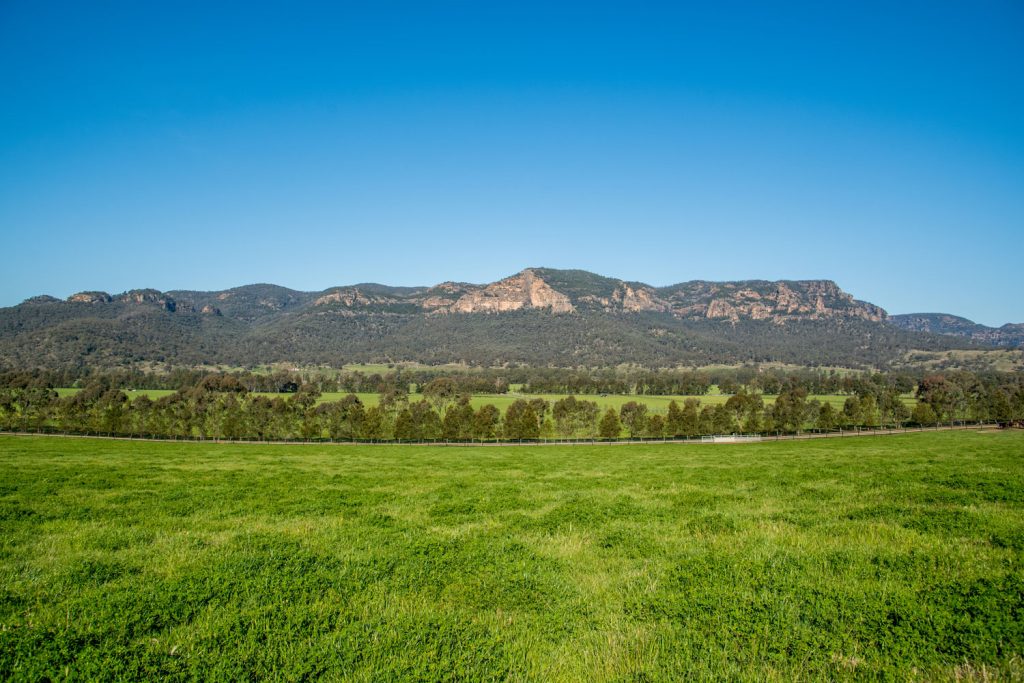
The Thompson family commenced their thoroughbred breeding operations at Widden in 1867, coincidentally the same year the Inglis family held their inaugural horse sale. In that same year, the Widden brand, JT over lazy 2, was registered. A brand that would be borne proudly on many champion fillies and colts as they flew across the racetrack.
In the early days, it cost considerable time and money to bring livestock by boat to Australia. This meant that the Thompson family had to be far-sighted in the horses they imported and bred. Nowhere on earth were horses in greater demand than in Australia at that time. The forerunner to what we now know as the Australian Studbook was established in 1878, 11 years after breeding commenced at Widden Stud. In that year, the Thompsons registered just three ‘blood’ mares in the Studbook. Before long, more and more horses bearing the Widden brand would fill the pages of the Australian Studbook.
Many of the greatest racing bloodlines today can be traced back to those foundation mares. But of course, there would be no great bloodlines without great sires. And there has been no shortage of famous stallions who made their mark at Widden Stud. As you enter the secure stallion complex, you are watched over by the 16 headstones of some of Widden’s greatest stallions, including Vain, Marscay, Lunchtime, General Nediyim, Salieri and Delta. In the boardroom of the sandstone office building hang portraits of those same stallions, overseeing the business which they propelled into greatness. The sandstone office building mirrors the original Widden Church lost to a bushfire in 1885.
Only the sandstone blocks survived and were used to build a stable housing the great stallions at Widden including Vain and Todman before him.
Of all the accolades bestowed on Widden Stud, it is Golden Slipper winners that the valley is most famed for producing. Stallion, Todman, was winner of the Inaugural Golden Slipper in 1957. From the start Widden bred horses have been unbeatable in the race and in over 60 years of the race’s history, the journey to success on the track has started at Widden more than anywhere else in the world.
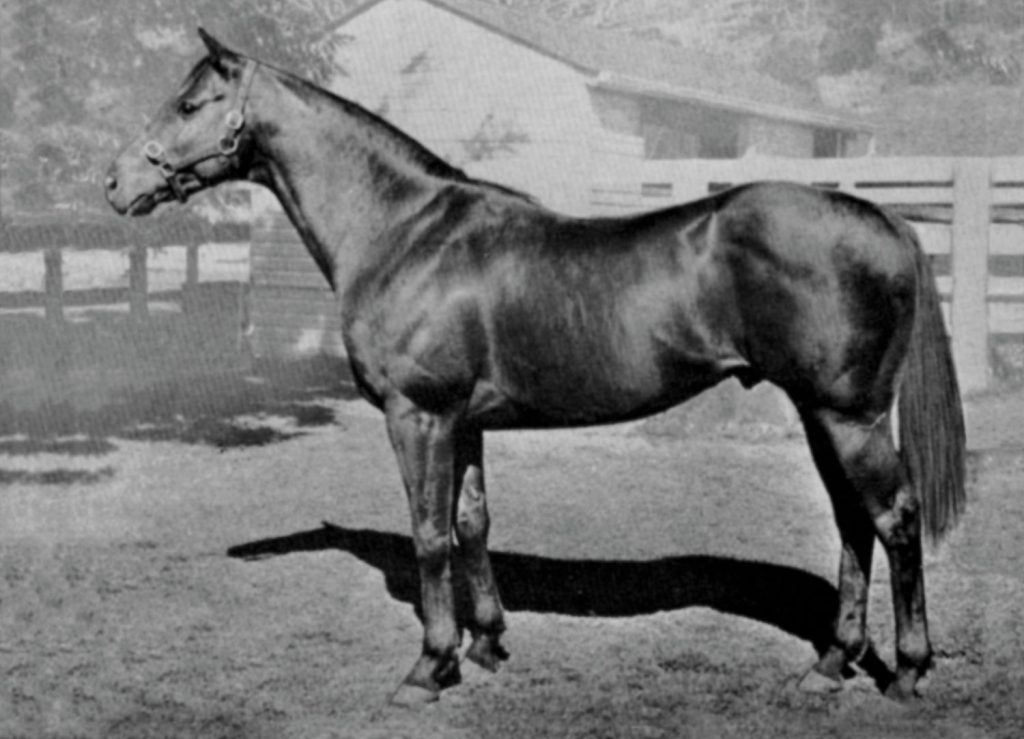
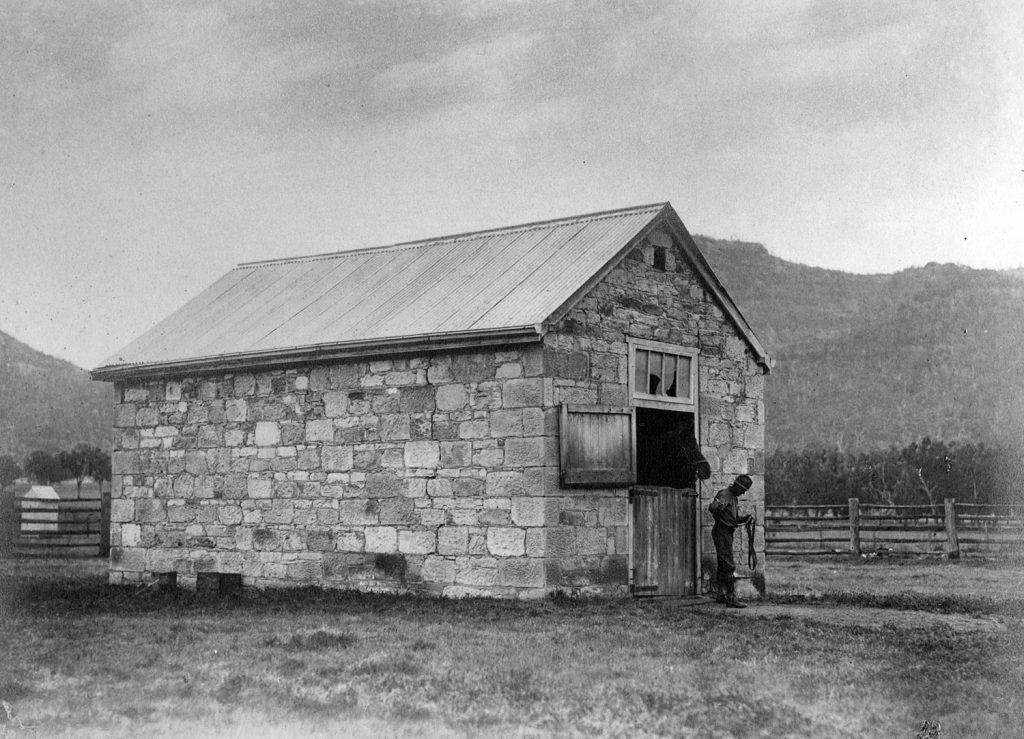
But what makes the Widden Valley such a prolific producer of champions?
The valley is made up of alluvial creek flats, irrigated lucerne paddocks and rolling hill country thick with feed, all framed by impressive sandstone cliffs and watched over by the cats’ ears, twin hills at the southern end of the valley. A lush paradise with typography and ground to suit any season. During a good season, Widden will produce enough hay for three years’ supply, comfortably nursing them through a dry spell. In a wetter season stock are moved into the foothills, where limestone pokes through the red dirt, primed to give growing youngstock exceptional bone structure. Improved pasture has ensured bountiful feed for mares and foals, and ongoing fencing projects expand paddocks into the hill country to protect from flooding in the area. All of which is a constant battle against the unpredictable seasons experienced over the past six years.
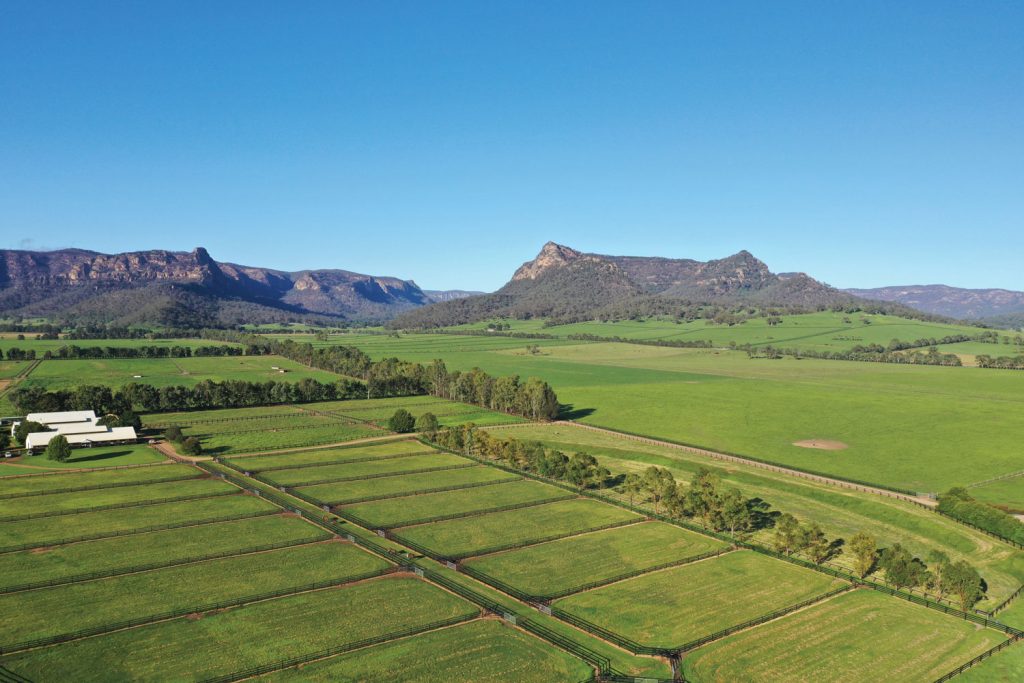
The encompassing typography of the country at Widden is primed for rearing youngstock with soils so rich that they step forward from their pasture almost ready for the salering. In a time not so long ago, herds of yearlings were mustered like mobs of cattle and driven by stockmen across creeks and down dusty tracks to market. Later, they would lead them over 60km to Denman, a yearling on either side of a trusted hack pony. Resting at a satellite property, the yearlings would embark on the rest of their journey to Newmarket via rail, an entire two-months before a sale. Today, their eight week sale preparation is intricate and detailed. No mosquito bite is welcome on their skin, their coats are not to be sun-bleached, avoided by limiting their turnout to the early hours of the morning. Though their preparation is almost all encompassing, youngsters at Widden are sheltered in their valley paradise, secluded from the outside world. No noise above a passing squark from a cheeky cockatoo or a tractor rumbling down the lane. This tranquillity is far removed from the hustle and bustle of the sales complexes to which they are headed, the first test they will face before the only test that matters; the racetrack.
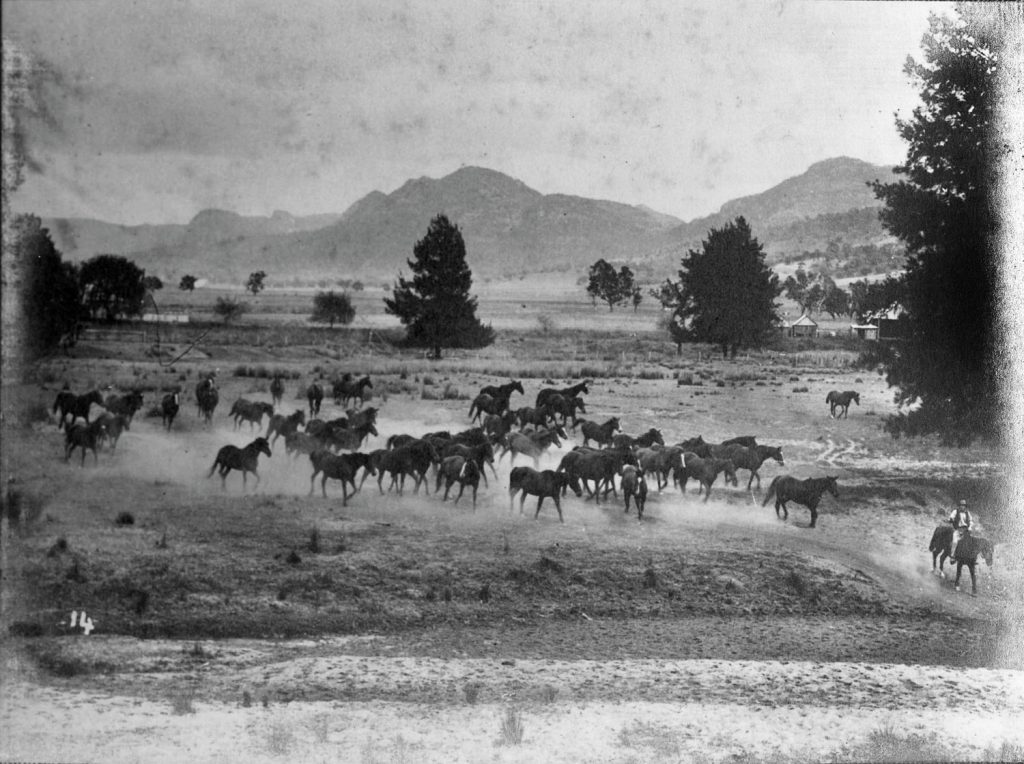
Almost 160 years of carefully selected genetics lead to 18 months of feeding to just 8 weeks of intensive preparation before around 140 Widden graduates leave the farm for yearling sales each year. An impressive combination of genetics for speed and stamina, blood, bone, and muscle join expertly advised diets to ensure that once a yearling leaves the property, they are the image of racing perfection. A tour of the farm in the lead up to the sales season will almost certainly contain a viewing of yearlings being hand walked, the only possible preparation for the hours of parading they will come to at any given sale. But how to pick a winner? This is a mystery buyers have been trying to crack since that very first Inglis sale back in 1867, and a secret that owner Antony Thompson will not give up easily. They are born to run, bred to have the will to win, but which one will have the heart? The try to prevail in first place on the track.
The heart to try is something found not only in the livestock at Widden, but also part of the people who have been custodians of the land for seven generations. This succession of generations of Thompson family has not been without its own trials and tribulations. Tragedy seems to have struck the past two generations of Thompson family. James Webster ‘Bim’ Thompson, father to Antony and his four older sisters, was known to be an outstanding horseman in a family that had no shortage of equestrian talent. His hopes of attending the 1964 Olympics for show jumping were dashed when news broke that his Father, Frank Thompson, had been critically injured in a car accident and it was time for him to return to Widden. It is recounted that Bim demonstrated his passion for his four-legged athletes with enthusiasm and fun, demonstrated perfectly in a story fit for the movies. During one Muswellbrook race meet in 1971, a jockey mounted runner, Crispian, in the Widden colours; orange with a purple cap. This jockey was larger than most, 84kgs to be precise, and against all odds Crispian and his pilot went on to win the open-class sprint at Muswellbrook that day. Upon closer inspection, racegoers spotted that the jockey was non-other than Bim himself who had found a way to ride his own horse when the regular jockey did not show up on time.
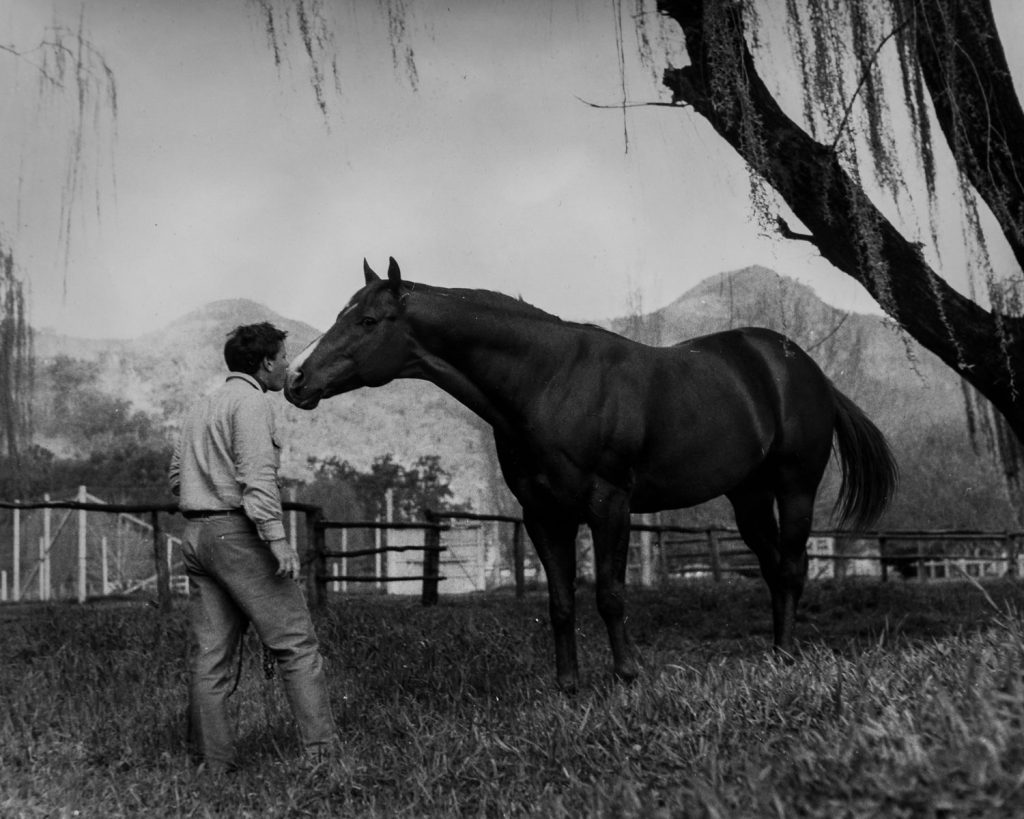
Tragedy struck once again in 1980, when Bim was killed in an accident before Antony’s eighth birthday, leaving behind his wife Merilyn, four daughters and a young Antony. At the time, Antony was still schooling at the Widden schoolhouse and would do so for a further two years before the school was closed after serving the Thompson family, their staff and their children from more than 60 years. From there he would move to boarding at the Kings School in Parramatta as his father and grandfather had done before him. Widden Stud was held in trust from Bim’s death by a board consisting of his widow, Merilyn, Stud Accountant Andy Noble and long-time family friend and Scone Real Estate Agent, Bill Rose. A handful of past employees returned to the stud to lend a hand where they could. These included Englishman, Henry Plumptre, who returned as manager, assisted by Bob Tranter, Adrian Priest and George Asimus. A much leaner team than the one we find at Widden today. A 1981 article from the Sydney Morning Herald returns to Widden a year after Bim’s passing. In this article Henry Plumptre finds inspiration in a young Antony’s passion for the farm and his stallions even at such a young age. ‘Antony is a chip off the old block. Bim will never be dead while his son is alive. My biggest battle is to get him away from the property. He wants to be among the horses all the time.’ ‘He is a strong-willed and independent little fellow. My job is to keep the stud going until Antony is old enough to know what he wants to do.’
Upon completing his schooling aged 17, Antony took three years apprenticeship in the industry beginning as a Jackeroo at Glen Rock Station, a cattle station situated high in the Barrington Tops of the Hunter Valley. Here Antony rode and shod rough horses picked from mobs of 100 or more. After six months he moved on the Ra Ora stud in New Zealand, then to Sydney trainer John Morish, all the while honing the skills that would bring him back to Widden. He moved on to work for Patrick Hogan at the famous Cambridge stud before working at a London bloodstock agent and Kentucky horse farm. In 1993, aged 21, Antony took stewardship of Widden, seeing clearly what needed to be done to keep the stud competitive with corporate international breeders taking over other studs across Australia. He borrowed to invest in stallions and broodmares and a list of improvements on the farm formed, to bring the stud back to life in his vision.

The Success of the Stud
It is this passion, grit and determination that permeates through our conversation with Antony as he drives around the farm, pointing out a paddock that has not quite recovered from the recent wet weather or a yearling that catches his eye. It reaches down through the ranks of employees who call Widden their home today and drives them forward through every dawn feed run or late foaling watch.
Each member of the equine team draws on skills from across the industry. From the priming and turnout of the hack ring to veterinary skills learned over years of working with horses. Widden operate their own vet clinic to assist with the foaling and breeding seasons. With 150 mares owned or part owned by Widden, a further 300 mares from outside owners and additional short stay mares for the breeding season, there is no shortage or work for the veterinary team. Every aspect of the farm is catered to by a dedicated team of professionals who reside on site, and who live and breathe the racing industry. They know in minute detail the idiosyncrasies of each mare, foal, or stallion, knowing when something is out of place simply from a glance. The farming and maintenance crews work tirelessly to maintain paddocks and fencing, ensuring lucerne is planted, spraying is tackled, stock is moved, all in time for their equine residents. There is also an extensive office team in residence at Widden, taking on all manner of jobs for the stud including accounts, marketing, and sales.
It is labour intensive work for everyone involved but the reward is unrivaled. 2023 got off to an exceptional start for the Widden team, producing the top priced filly for the Magic Millions sale as their Zoustar x Solar Charged filly lit up the salering reaching an impressive $2.6million. Not a length off her brother who soared to $3million in the Inglis Easter Yearling Sale a year prior, becoming the most expensive colt sold in Australia in 2022. Zoustar, Widden’s headline stallion in recent years, continues to produce champions alongside nine other stallions housed in the Stallion complex at the New South Wales property. A further ten stallions stand at the Widden property in Victoria, attracting some of Australia’s greatest mares to stud. With every passing race-day, the stocks of each stallion fluctuate based on the results of their progeny. Savvy breeders keep their fingers on the pulse of which stallions are proving their worth out on the track. And for Zoustar his stats never fail, a champion 1st, 2nd and 3rd season sire with over $56million in prize money from five seasons. Sire to 45 stakes performers including Group One winners Sunlight, Zoutori and Mizzy, and to 19 stakes performing two year-olds.
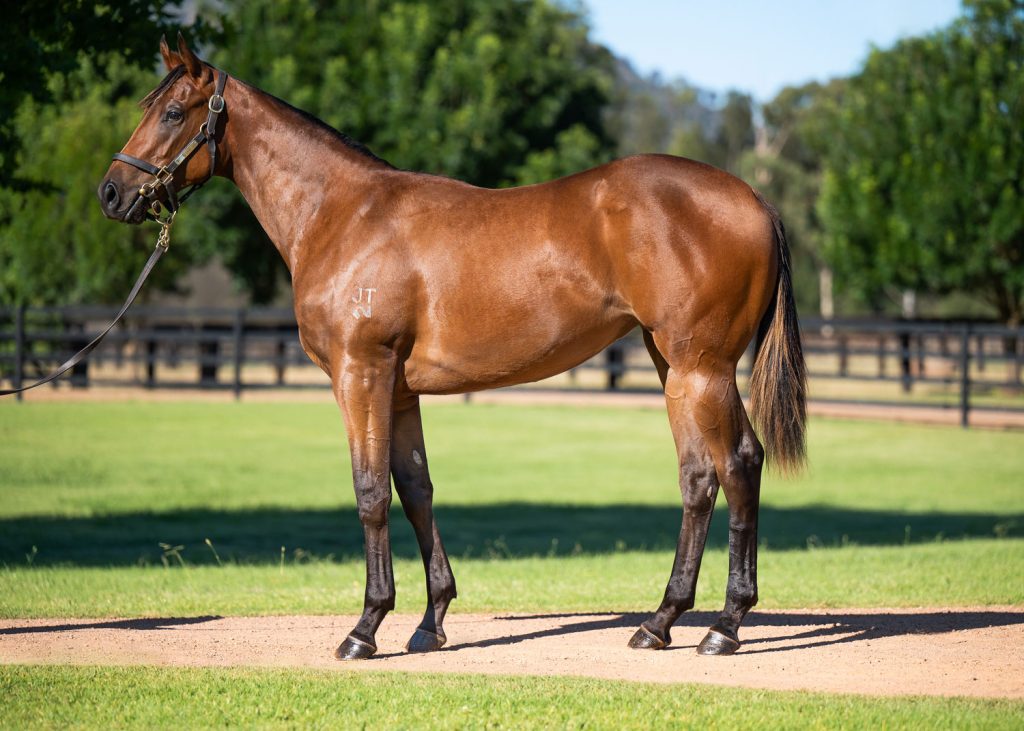
It fell to Yearling Manager Liam Attwood to lead the Zoustar x Solar Charged filly through the salering on the Gold Coast this January. There was a sense that she was special from the start. Liam and his team did an outstanding job in her preparation. Not one hair was out of place, hooves blackened and coat glossy. Liam himself is testament to the passion and dedication of every employee within the Widden team. He joined the stud without previous equine experience but with a passion for the racing industry. Armed with a willingness to learn and a strong work ethic, within six years Liam has risen to Yearling Manager. Widden is founded on hard work and tenacity, passed down through the generations who have watched over the stud with the same values as the generation before. But this could not have been achieved without an equally passionate and dedicated team behind the scenes driving every aspect of the stud forward to achieve greatness.
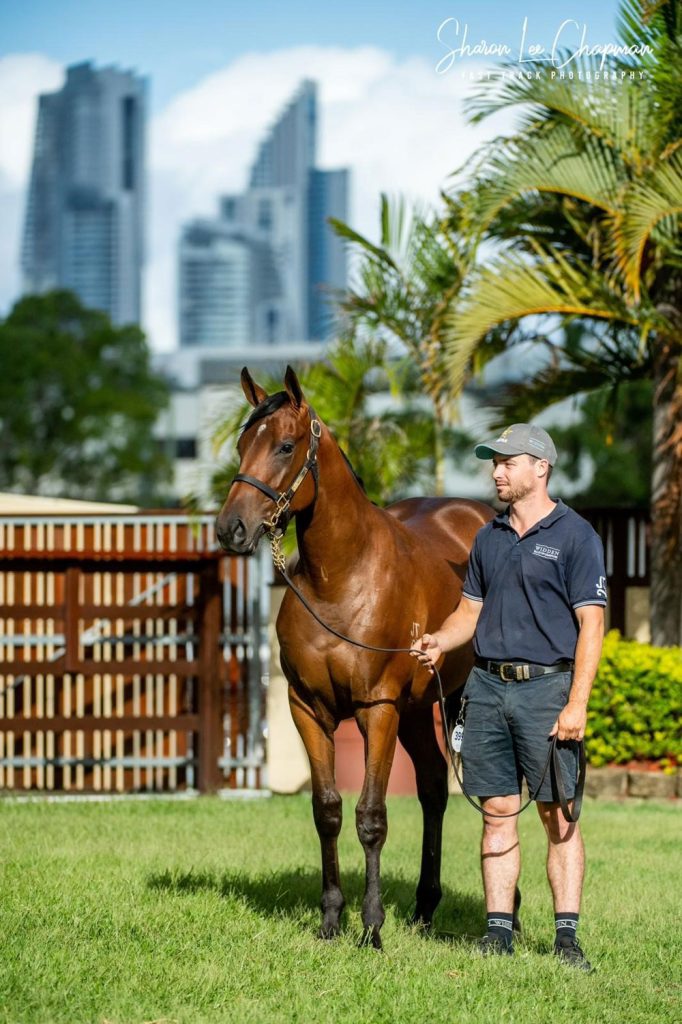
Through 156 years of horse breeding the Thompson family have maintained a level of success unmatched by any other horse stud in the world. The past two years have been record breaking with multi million dollar yearling sales forever inked into the pages of history books. Undoubtedly the next generation of the Thompson family will continue the legacy and legend of the Widden story, carving their own successes and writing their own pages into the history of the Valley of Champions.
This article covers just part of the Widden Story. In it’s entirety it is a story that could be the stuff of movies. If you would like to read more, Turf Historian Douglas Barrie published a comprehensive history of Widden titled, ‘Valley of Champions: The Story of the Widden Stud’, to mark the stud’s centenary in 1967.
Article by Jessica Rea
Images provided by Widden Stud
